Key Takeaways
1. Computer Science: Essential for Efficient Problem Solving
Computer science is everywhere, but it’s still taught as boring theory.
Practical Application. Computer science isn't just abstract theory; it's a crucial foundation for effective programming and problem-solving in the real world. Many coders lack formal computer science training, leading to inefficient solutions. This book aims to bridge that gap by presenting computer science concepts in a distilled, accessible format.
Computational Thinking. The core of computer science lies in computational thinking, which involves breaking down problems into computable systems. This approach is not limited to coding but can be applied to everyday situations, such as streamlining packing or speeding up cooking through parallelism.
Abundant Power, Scarce Skills. Computing power is readily available, but the ability to use it efficiently is scarce. By mastering computer science principles, individuals can unlock the full potential of machines and create innovative, effective solutions to complex problems.
2. Logic: The Bedrock of Computational Thinking
Coders work with logic so much it messes their minds.
Formal Logic. Logic is fundamental to computer science, enabling coders to deliberately solve problems. Formal logic provides a framework for reasoning about the validity of statements and relationships, using operators like AND, OR, NOT, and conditionals.
Boolean Algebra. Boolean algebra simplifies logical expressions, similar to how elementary algebra simplifies numerical expressions. De Morgan's Laws, for example, allow the transformation of ANDs into ORs and vice versa, aiding in the simplification of complex logical models.
Truth Tables. Truth tables offer a systematic way to analyze logical models by examining all possible configurations of variables. By constructing truth tables, one can determine the conditions under which a system will function correctly, as demonstrated in the "Fragile System" example.
3. Counting: Mastering the Art of Enumeration
It’s important to count things correctly—you’ll have to do it many times when working with computational problems.
Combinatorial Analysis. Counting techniques, including multiplications, permutations, combinations, and sums, are essential for solving computational problems. These tools allow us to determine the number of possible outcomes or configurations, which is crucial for estimating the feasibility of algorithms.
Factorials and Permutations. The factorial function (n!) calculates the number of ways to order n items. Permutations, which consider the order of selection, are used to count the number of ways to arrange m items out of n possible items.
Combinations and Sums. Combinations, denoted as "n choose m," calculate the number of ways to select m items out of n, regardless of order. Sums, expressed using the sigma (Σ) notation, are used to calculate the total number of possibilities in sequential events, as demonstrated in the "Flying Cheap" example.
4. Probability: Navigating the Realm of Chance
The principles of randomness will help you understand gambling, forecast the weather, or design a backup system with low risk of failure.
Calculating Odds. Probability principles help quantify the likelihood of events, enabling informed decision-making in various scenarios. The probability of an event is calculated as the number of ways the event can happen divided by the total number of possible outcomes.
Independent and Mutually Exclusive Events. Independent events have outcomes that do not influence each other, and their probabilities are multiplied to find the probability of both occurring. Mutually exclusive events cannot happen simultaneously, and their probabilities are summed to find the probability of either occurring.
Complementary Events and Gambler's Fallacy. Complementary events cover all possible outcomes, and the sum of their probabilities is 100%. It's crucial to avoid the gambler's fallacy, which incorrectly assumes that past events influence the outcome of independent events.
5. Complexity Analysis: Gauging Algorithmic Efficiency
In almost every computation, a variety of arrangements for the processes is possible.
Time Complexity. Time complexity, denoted as T(n), quantifies the number of operations an algorithm performs for an input of size n. Analyzing time complexity helps predict how execution time will grow as the input size increases.
Big-O Notation. Big-O notation expresses the dominant term of an algorithm's cost function in the worst case, providing a standardized way to represent time complexity. Algorithms with lower Big-O complexities, such as O(n log n), generally perform better than those with higher complexities, such as O(n^2), for large inputs.
Exponential Algorithms. Exponential time algorithms, with complexities like O(2^n), are considered "not runnable" due to their explosive growth. These algorithms are impractical for large inputs and should be avoided unless dealing with very small problem sizes.
6. Algorithm Design Strategies: A Toolkit for Problem Solving
If you find a good move, look for a better one.
Iteration and Recursion. Iteration uses loops to repeat a process until a condition is met, while recursion involves a function delegating work to clones of itself. Recursive algorithms are often simpler but can introduce computational overhead.
Brute Force and Backtracking. Brute force solves problems by inspecting all possible solution candidates, while backtracking optimizes the search by testing bad options and then stepping back. Backtracking is effective when choices restrain subsequent choices.
Heuristics and Divide and Conquer. Heuristics provide a reasonable way out by sacrificing optimality for speed, while divide and conquer breaks down problems into smaller, similar subproblems. Dynamic programming avoids redundant computations by identifying and memoizing repeated subproblems.
7. Data Structures: Organizing Information for Optimal Access
Good programmers worry about data structures and their relationships.
Abstract Data Types (ADTs). ADTs specify a group of operations for a given data type, hiding implementation details and promoting code reusability. Common ADTs include Stacks, Queues, Lists, Maps, and Sets.
Arrays and Linked Lists. Arrays store items in contiguous memory locations, providing instant access but limited flexibility. Linked lists use a chain of cells with pointers, allowing for easy insertion and deletion but slower access.
Trees and Hash Tables. Trees organize data hierarchically, with Binary Search Trees enabling efficient searching. Hash tables use hash functions to map data to memory locations, providing O(1) access time but requiring careful management of collisions.
8. Algorithms: Leveraging Pre-Existing Solutions
[Coding is] attractive not only because it can be economically and scientifically rewarding, but also because it can be an aesthetic experience much like composing poetry or music.
Sorting Algorithms. Sorting algorithms arrange data in a specific order, with simpler algorithms like Selection Sort and Insertion Sort being O(n^2) and more efficient algorithms like Merge Sort and Quicksort being O(n log n). Insertion Sort is very efficient at sorting nearly sorted datasets.
Searching Algorithms. Searching algorithms locate specific information in memory, with Sequential Search being O(n) and Binary Search being O(log n) for sorted data. Hash tables provide O(1) search time.
Graph Algorithms. Graph algorithms operate on data represented as nodes and edges, with Depth-First Search (DFS) and Breadth-First Search (BFS) exploring graphs in different ways. Dijkstra's Algorithm finds the shortest path between nodes.
9. Databases: Managing Vast Data Collections
While I am best known for my work on databases, my fundamental skills are those of an architect: analyzing requirements and constructing simple, but elegant, solutions.
Relational Databases. Relational databases organize data into tables with rows and columns, using primary and foreign keys to establish relationships. SQL is the standard query language for relational databases.
Non-Relational Databases (NoSQL). Non-relational databases offer more flexibility by ditching tabular relations and fixed schemas. Document stores, key-value stores, and graph databases are examples of NoSQL databases.
Distributed Databases. Distributed databases coordinate multiple computers to handle large datasets, high query loads, or mission-critical applications. Techniques include single-master replication, multi-master replication, and sharding.
10. Computer Architecture: Unveiling the Inner Workings
Any sufficiently advanced technology is indistinguishable from magic.
Processor and Memory. A computer consists of a processor (CPU) and memory (RAM). The memory stores instructions and data, while the processor fetches instructions and performs calculations.
CPU Operations. The CPU performs simple mathematical operations and moves data between the RAM and internal registers. The instruction set defines the operations a CPU can execute.
Memory Hierarchy. The memory hierarchy consists of CPU registers, L1/L2/L3 caches, RAM, and secondary storage (hard disk). Caches exploit temporal and spatial locality to reduce RAM access time.
11. Programming Languages: Bridging the Gap Between Human and Machine
When someone says: “I want a programming language in which I need only say what I wish done”, give him a lollipop.
Values, Expressions, and Statements. Programming languages manipulate information using values, expressions, and statements. Values represent information, expressions produce values, and statements instruct the computer.
Variables and Typing. Variables associate names with values, and typing assigns a data type to variables. Static typing requires explicit type declarations, while dynamic typing checks types at runtime.
Programming Paradigms. Programming paradigms offer different approaches to problem-solving, including imperative, object-oriented, and functional programming. Each paradigm has its strengths and weaknesses, influencing code structure and organization.
Last updated:
FAQ
What’s "Computer Science Distilled" by Wladston Ferreira Filho about?
- Concise computer science overview: The book distills core computer science concepts, focusing on the art of solving computational problems efficiently.
- Practical, not just theory: It aims to make computer science accessible and relevant, minimizing academic formalities and emphasizing practical problem-solving.
- Covers foundational topics: Topics include algorithms, data structures, complexity, databases, computer architecture, and programming paradigms.
- For coders and learners: It’s designed for programmers with basic coding experience, as well as those seeking a refresher or a distilled introduction to computer science.
Why should I read "Computer Science Distilled" by Wladston Ferreira Filho?
- Efficient problem-solving focus: The book teaches you how to break down and solve computational problems using efficient strategies.
- Minimal prerequisites required: Only basic programming knowledge (like understanding for and while loops) is needed to benefit from the book.
- Improves coding skills: By understanding computer science fundamentals, you’ll write better, more efficient code and be a more effective programmer.
- Applicable to daily life: Concepts like caching, parallelism, and abstraction are shown to be useful beyond programming, in everyday problem-solving.
What are the key takeaways from "Computer Science Distilled"?
- Modeling and abstraction: Learn to model problems using flowcharts, pseudocode, and mathematical models to make them computable.
- Algorithmic strategies: Master core strategies like iteration, recursion, brute force, backtracking, heuristics, divide and conquer, dynamic programming, and branch and bound.
- Complexity matters: Understand time and space complexity, Big-O notation, and why algorithm efficiency is crucial for scalability.
- Data organization: Grasp the importance of data structures and abstract data types for organizing and manipulating information effectively.
Who is the ideal reader for "Computer Science Distilled" by Wladston Ferreira Filho?
- Beginner to intermediate coders: Anyone with basic programming experience who wants to deepen their understanding of computer science.
- Self-taught programmers: Those who code but lack formal computer science education will find it an excellent recap and consolidation tool.
- Students and professionals: Both students preparing for interviews and professionals seeking a refresher on core concepts will benefit.
- Problem solvers: Anyone interested in computational thinking and applying it to real-world or technical problems.
How does "Computer Science Distilled" define and use abstraction and modeling?
- Abstraction simplifies complexity: The book emphasizes using abstractions (like flowcharts, pseudocode, and abstract data types) to hide unnecessary details and focus on problem-solving.
- Modeling for computation: Problems are modeled mathematically or visually to make them suitable for algorithmic solutions.
- Separation of concerns: By using abstractions, code becomes easier to understand, modify, and reuse, as implementation details are hidden behind interfaces.
- Real-world analogies: The book uses relatable examples (like cars and cooking) to illustrate how abstraction and modeling work in both code and daily life.
What are the main algorithmic strategies covered in "Computer Science Distilled"?
- Iteration and recursion: Learn to handle repetitive tasks through loops and recursive function calls.
- Brute force and backtracking: Understand when to exhaustively search all possibilities and when to optimize by pruning bad options.
- Heuristics and greedy methods: Use fast, approximate solutions when optimal ones are too costly or complex.
- Divide and conquer, dynamic programming, branch and bound: Master advanced strategies for breaking down problems, avoiding redundant work, and efficiently searching solution spaces.
How does "Computer Science Distilled" explain complexity and Big-O notation?
- Time and space complexity: The book teaches how to analyze the number of operations (time) and memory usage (space) as input size grows.
- Big-O notation: It introduces Big-O as a way to classify algorithm growth rates (e.g., O(1), O(n), O(n log n), O(n²), O(2ⁿ)), focusing on the dominant term.
- Practical impact: Real-world examples show how inefficient algorithms become unusable as data grows, and why choosing the right algorithm is critical.
- Exponential and NP-complete problems: The book warns about problems that can only be solved with exponential time algorithms and the practical limits of computation.
What are the essential data structures and abstract data types in "Computer Science Distilled"?
- Core data structures: Arrays, linked lists, double linked lists, trees (including binary search trees and heaps), graphs, and hash tables are explained.
- Abstract data types (ADTs): Stacks, queues, priority queues, lists, sorted lists, maps (dictionaries), and sets are covered, with their operations and use cases.
- Choosing the right structure: The book discusses when to use each structure based on access patterns, performance needs, and memory constraints.
- Separation of interface and implementation: ADTs define what operations are available, while data structures determine how they’re implemented in memory.
How does "Computer Science Distilled" approach databases and data management?
- Relational databases: Explains tables, schemas, primary and foreign keys, normalization, SQL queries, and indexing for efficient data retrieval.
- Non-relational (NoSQL) databases: Covers document stores, key-value stores, and graph databases, highlighting their flexibility and use cases.
- Distributed databases: Discusses replication, sharding, consistency, and the trade-offs between performance and data integrity.
- Geographical and serialization formats: Introduces GIS databases for spatial data and common serialization formats like SQL, XML, JSON, and CSV for data exchange.
What programming paradigms and language concepts are explained in "Computer Science Distilled"?
- Imperative programming: Focuses on giving step-by-step instructions, using control structures and procedures.
- Declarative and functional programming: Teaches expressing what you want (not how), using high-order functions, closures, mapping, filtering, and reducing.
- Logic programming: Introduces expressing problems as logical assertions and queries, letting the computer search for solutions.
- Variables, typing, and scope: Explains how variables work, the difference between static and dynamic typing, and the importance of variable scope and namespaces.
What are the best quotes from "Computer Science Distilled" and what do they mean?
- "Everybody in this country should learn to program a computer, because it teaches you how to think." — Steve Jobs: Highlights the value of computational thinking beyond just coding.
- "Computer science is not about machines, in the same way that astronomy is not about telescopes." — Edsger Dijkstra: Emphasizes that computer science is about problem-solving, not just technology.
- "If you find a good move, look for a better one." — Emanuel Lasker: Encourages continuous improvement and strategic thinking in problem-solving.
- "Any sufficiently advanced technology is indistinguishable from magic." — Arthur C. Clarke: Reminds us of the wonder and power of computing when its principles are mastered.
What practical advice and methods does "Computer Science Distilled" by Wladston Ferreira Filho offer for becoming a better coder?
- Write things down: Use flowcharts, pseudocode, and models to clarify your thinking and avoid overloading your working memory.
- Focus on intuition, not memorization: The book encourages understanding concepts deeply rather than rote learning formulas or code.
- Use existing algorithms and libraries: Don’t reinvent the wheel—search for proven solutions before coding from scratch.
- Profile and optimize wisely: Write clean, readable code first, then use profiling tools to identify and optimize real bottlenecks, trusting compilers for micro-optimizations.
Review Summary
Computer Science Distilled receives mixed reviews, with an overall rating of 4.06 out of 5. Many readers praise it as an excellent introduction to computer science, highlighting its clear explanations and accessible approach. They appreciate its concise coverage of core concepts and its value for beginners and self-taught programmers. However, some critics argue that the book is too basic, lacks depth, and fails to adequately explain complex topics. Despite the criticism, many readers find it helpful for understanding CS fundamentals and recommend it as a starting point for those new to the field.
Similar Books
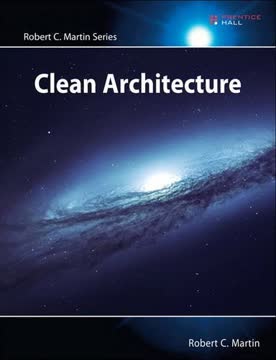
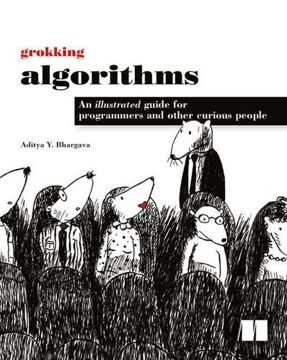
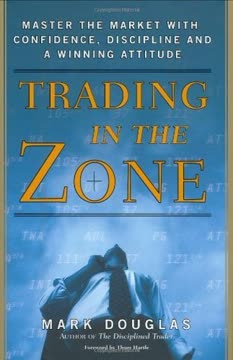

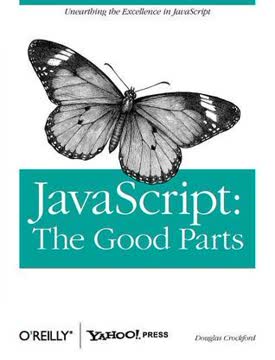



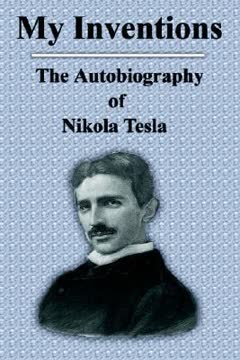

Download PDF
Download EPUB
.epub digital book format is ideal for reading ebooks on phones, tablets, and e-readers.




